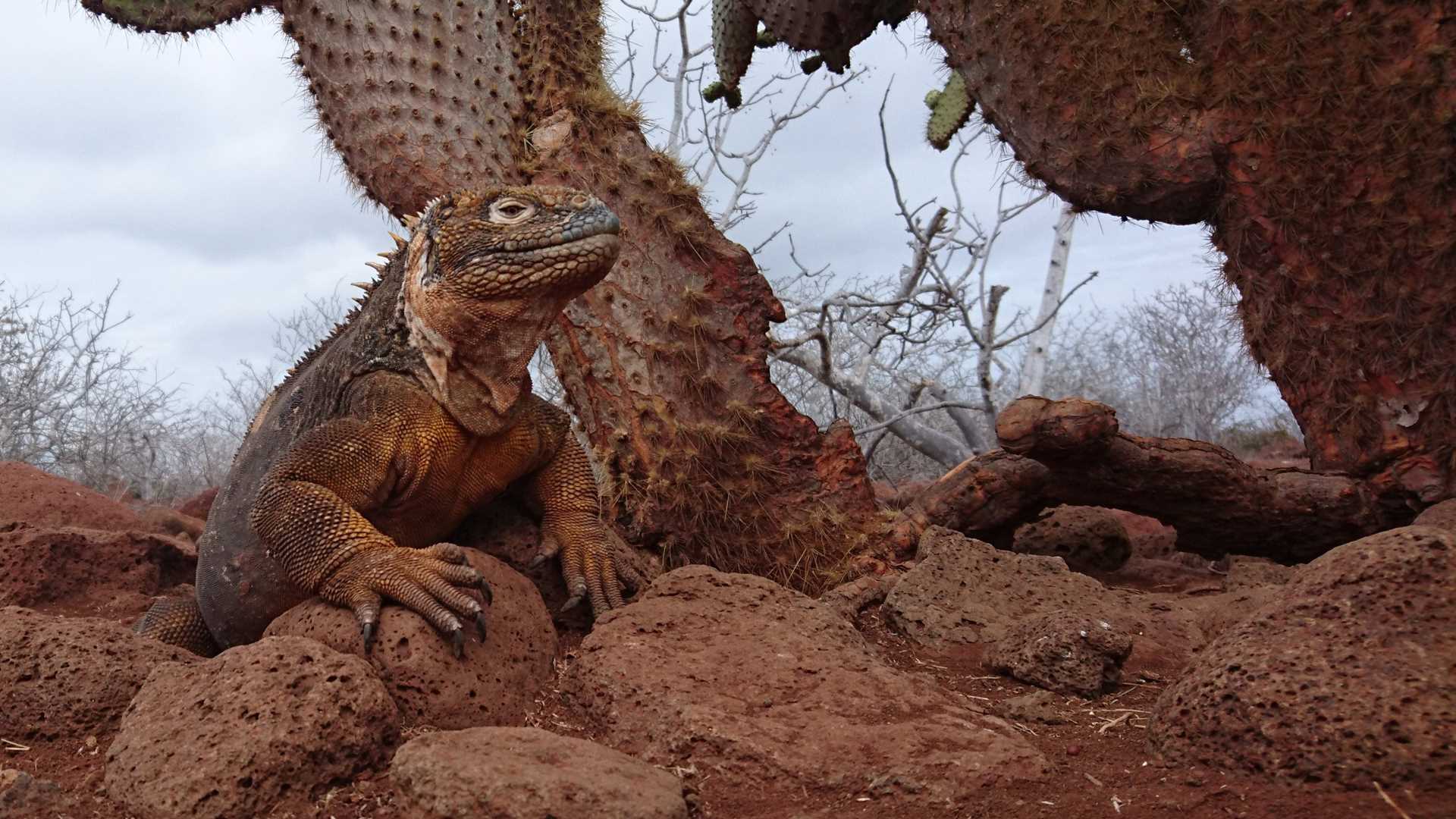Today the magic began—this was the first day of our expedition. This morning we visited North Seymour Island, located at the center of the Galapagos archipelago. This island offers unique conditions for marine birds—it is flat and was formed by magma pressure under the sea bed that pushed this part of the platform above sea level.
Blue-footed boobies find that North Seymour offers ideal conditions for breeding. We got to see many blue-footed boobies nesting, several with two eggs, other still courting. It was amazing to watch the males dancing and lifting their feet, you could hear all the whistles from the males, advertising themselves as female boobies flew by—what a show! Some of them are further along and have chicks already, it is always wonderful to see that both chicks are healthy and doing well.
This visitor site however offers another great sighting at this time of year—frigate birds courting. It is a joy to see the males with their inflated red gular sack, waiting to be noticed by an interested female, like roses waiting to be plucked. There was not much for them to do, the female frigates were flying around, however none of the males that we saw were chosen this morning—what a pity!
We spent more than two hours here—the island is only a mille, but we kept stopping to kept observe the incredible behaviors of the animals, and of course when we saw sea lion pups, we had to spend some time with them. How many pictures of Galapagos sea lions can you take during a single visit? Just too many, as the sea lions know how to get your attention, posing and showing you their best side—you almost have to ask yourself, who is watching at whom? As we continued our hike, several Galapagos land iguanas were spotted along the trail, resting over big rocks or underneath a prickly pear cactus. One of our young explorers even found a Galapagos dove nesting between the cactus pods—what a sighting! As we all got closer in order to take pictures, the proud little dove showed off a single egg. We went back on board of the National Geographic Endeavour with big smiles, great pictures and unforgettable memories.
In the afternoon, the ship was repositioned to Rabida Island. Here our guests were able to choose from snorkeling off the red sandy beach, or snorkeling off the Zodiac along the coastal area, or going out glass-bottom boat rides. I was very fortunate to join one of the groups going snorkeling off the Zodiac. It was a great outing, the underwater world was spectacular—there were thousands of sardines, anchovies and colorful fish, as well as white-tipped reef sharks and Pacific green sea turtles. Every one enjoyed the first snorkeling outing, an experience that is going to be repeated throughout our expedition.
The last outing on Rabida Island this afternoon was a series of hikes, to explore the impressive scenery. The place is like a drawing, full of different colors: the blue of the sky, the gray of the leafless palo santo trees, the brown and green of prickly pear cactus combined with the reddish color of the whole island. The sun went down in a beautiful sunset, signaling that it was time for us to return to our floating home. What a day! It seems that it would be difficult to top, but the Galapagos is full of beauty and surprises, and tomorrow we are going to the western part of the Archipelago, where the adventure continues…









